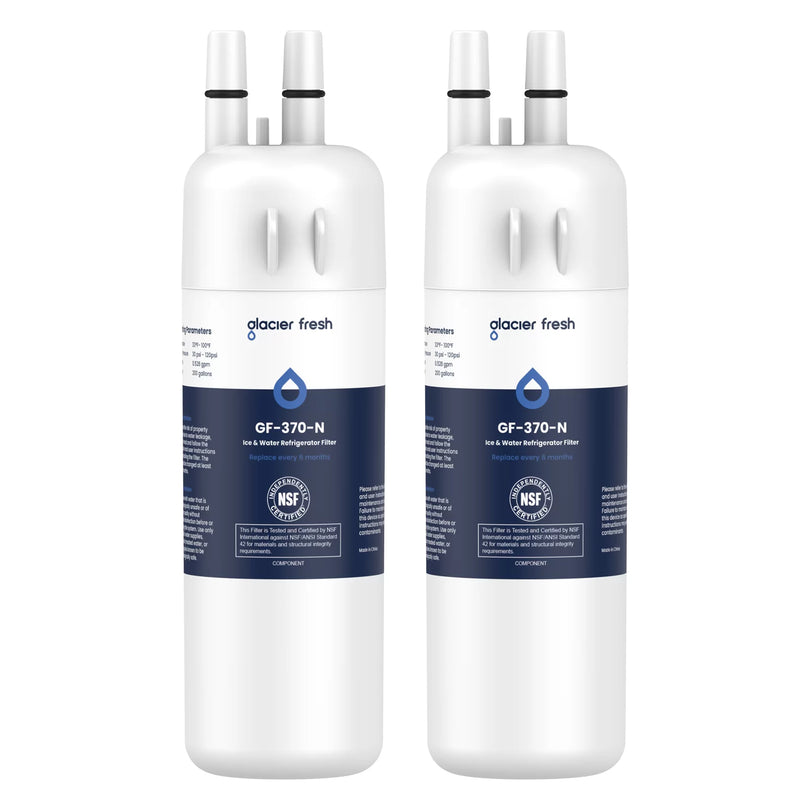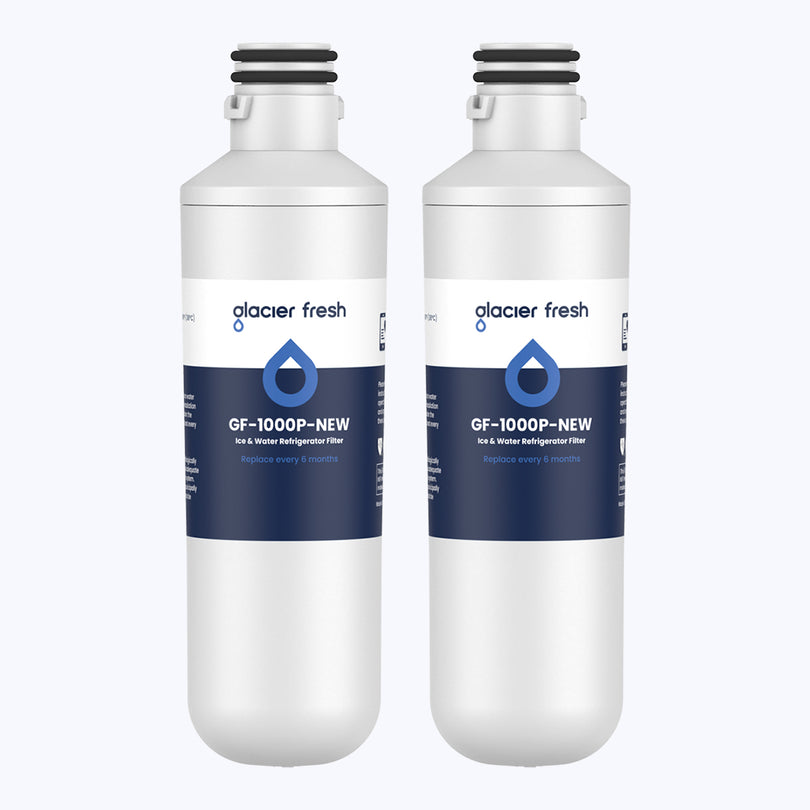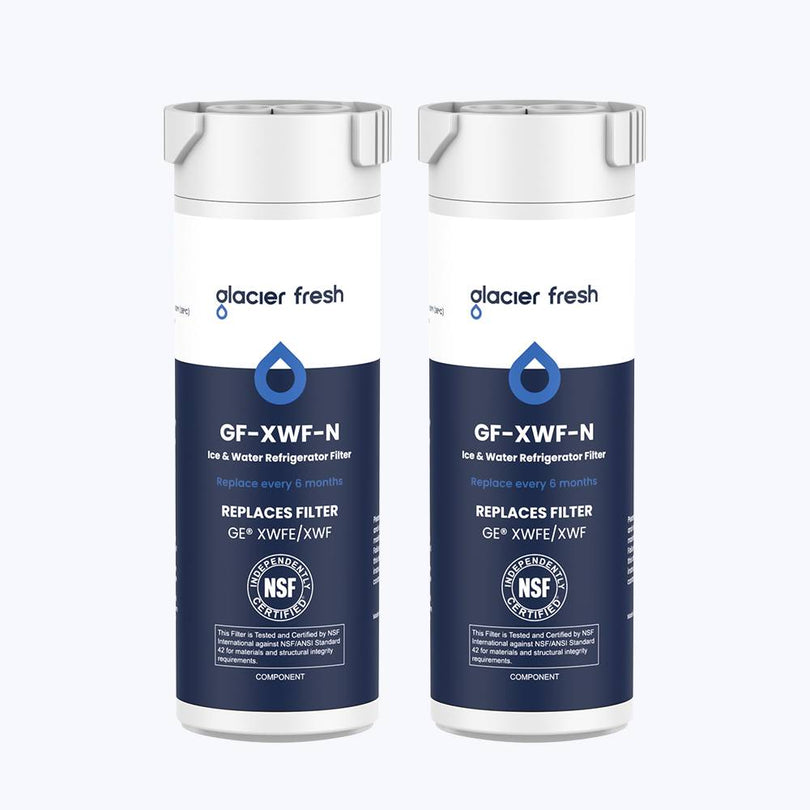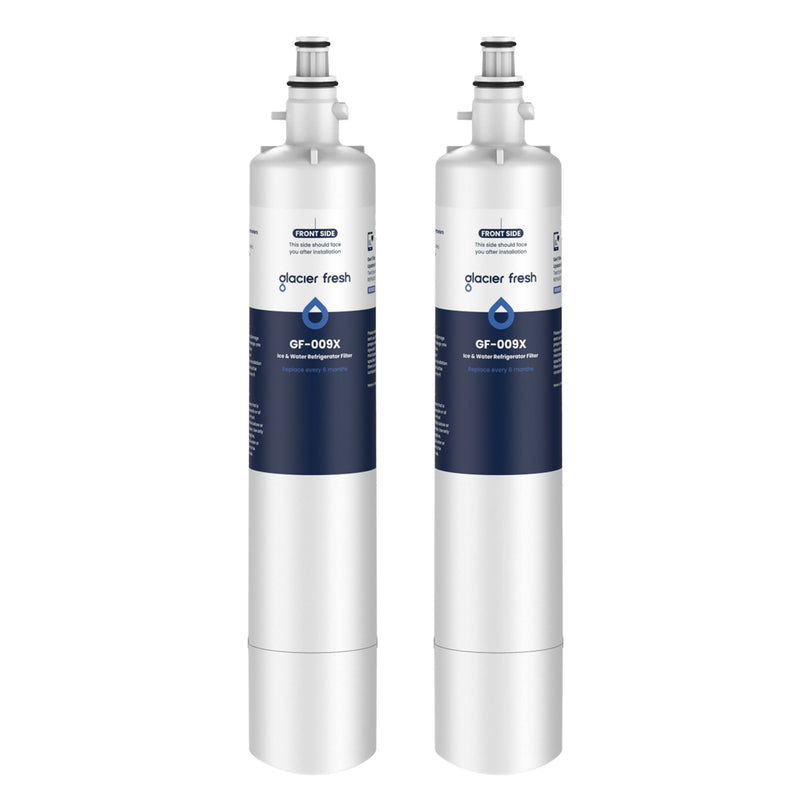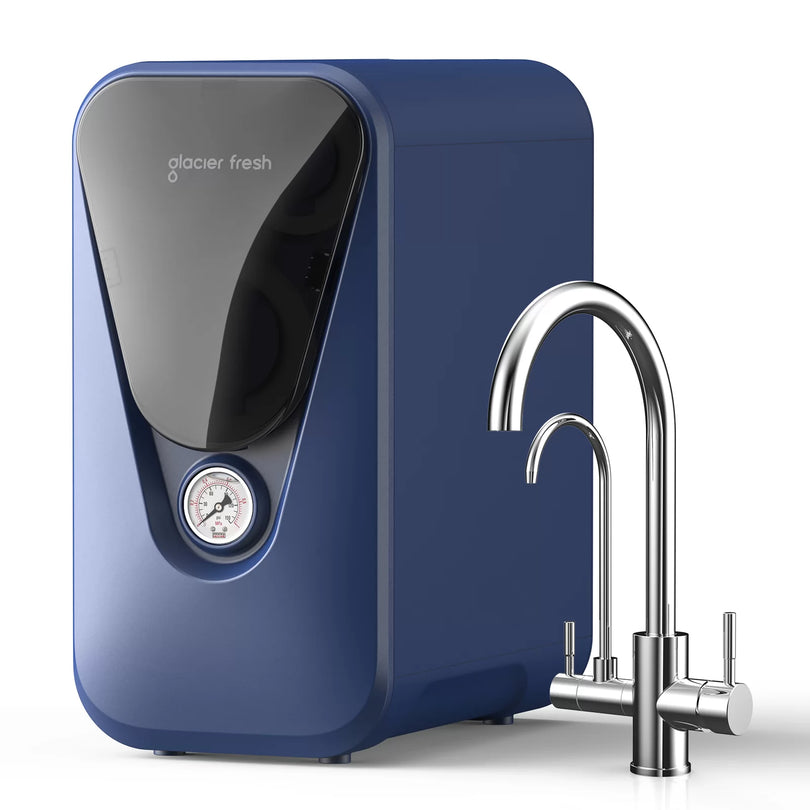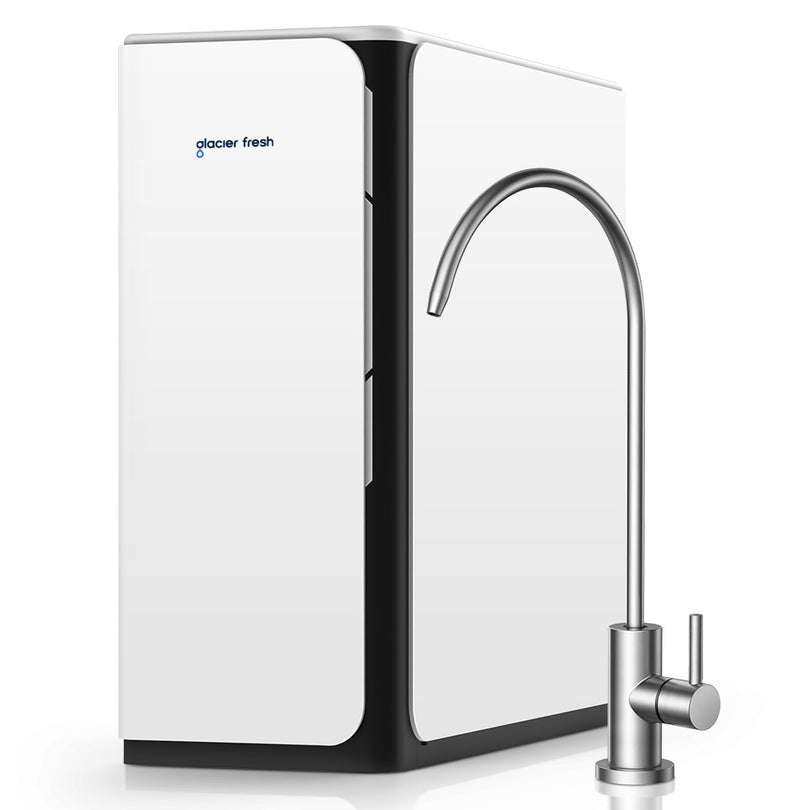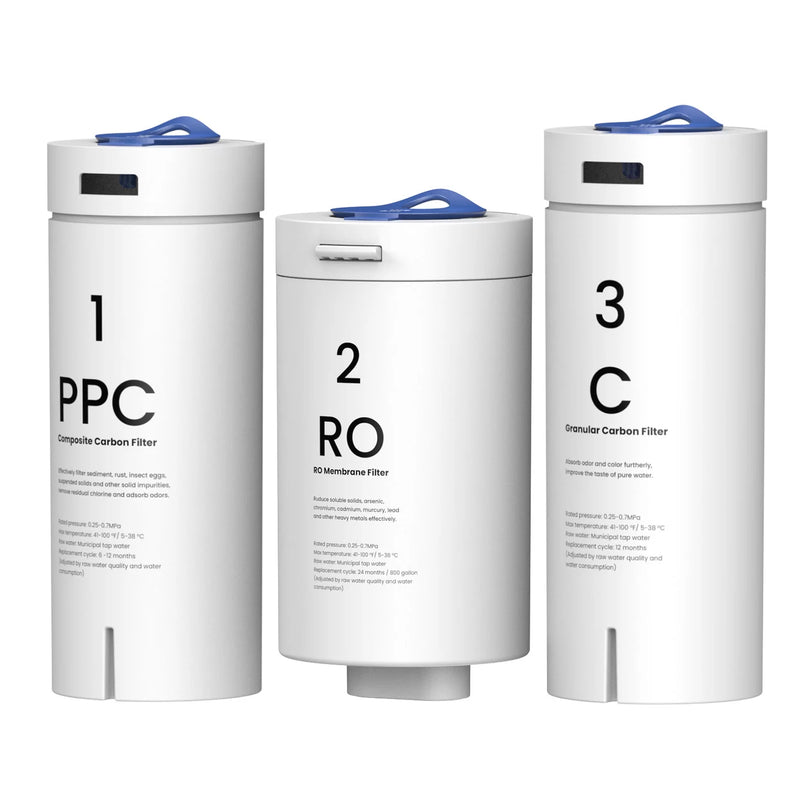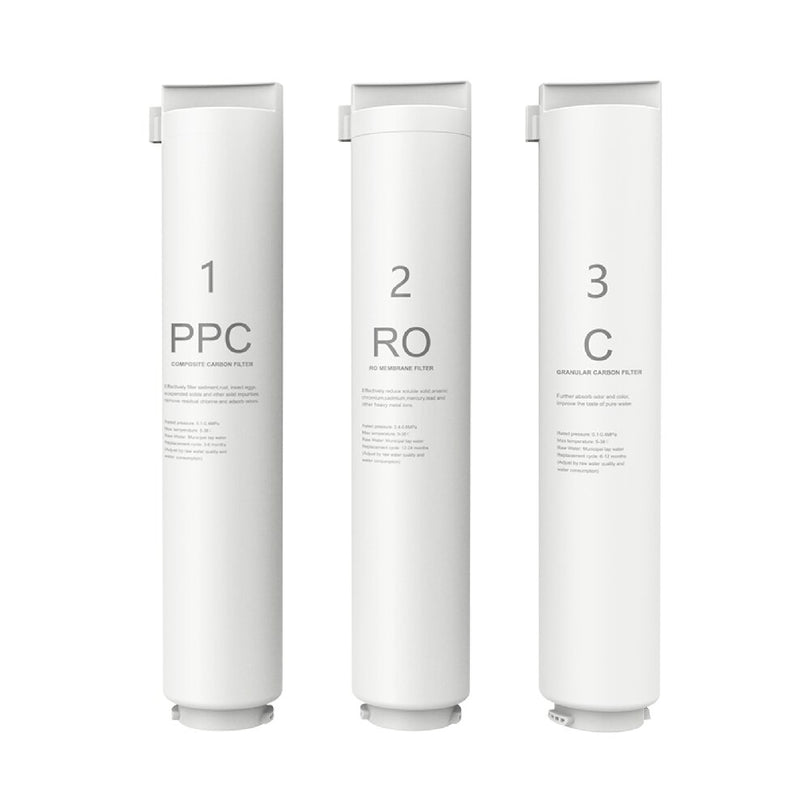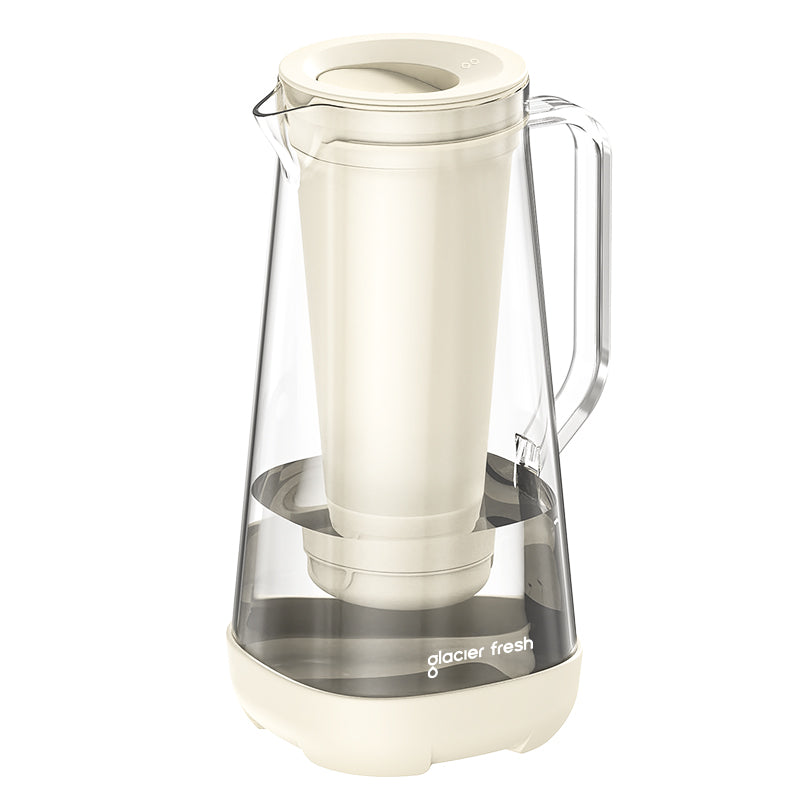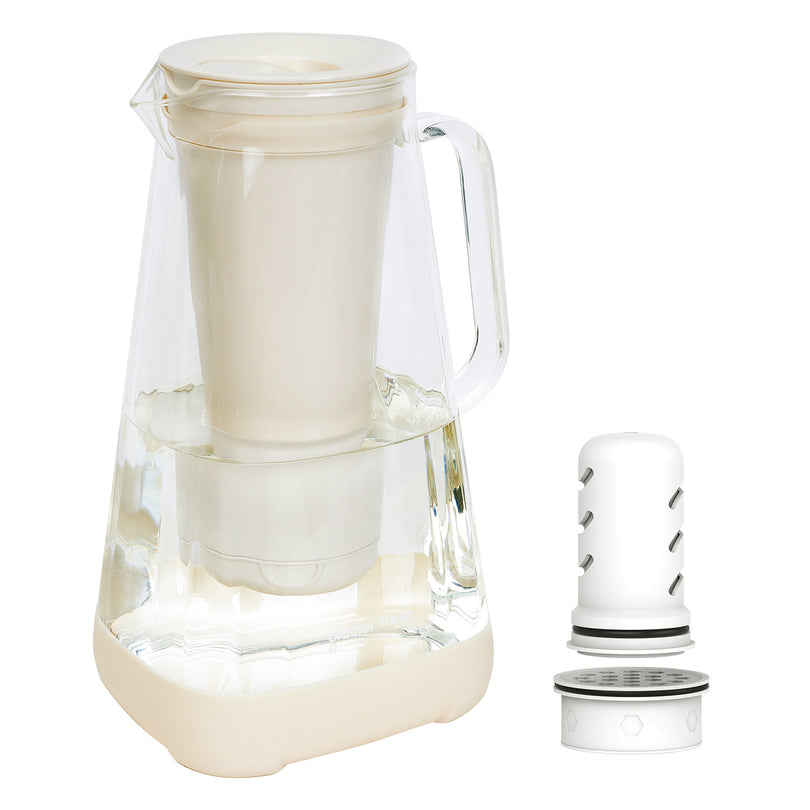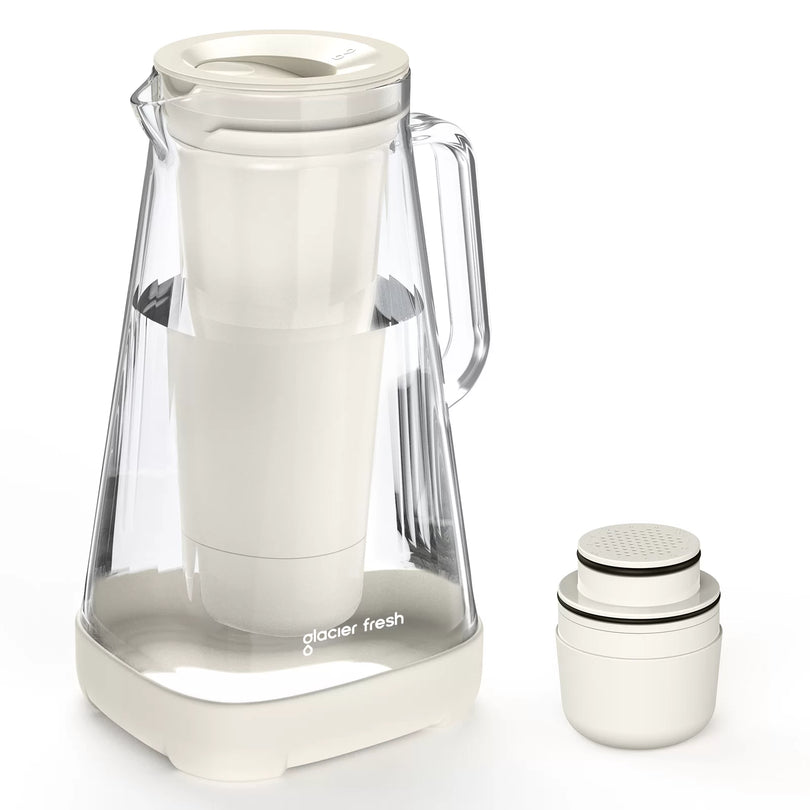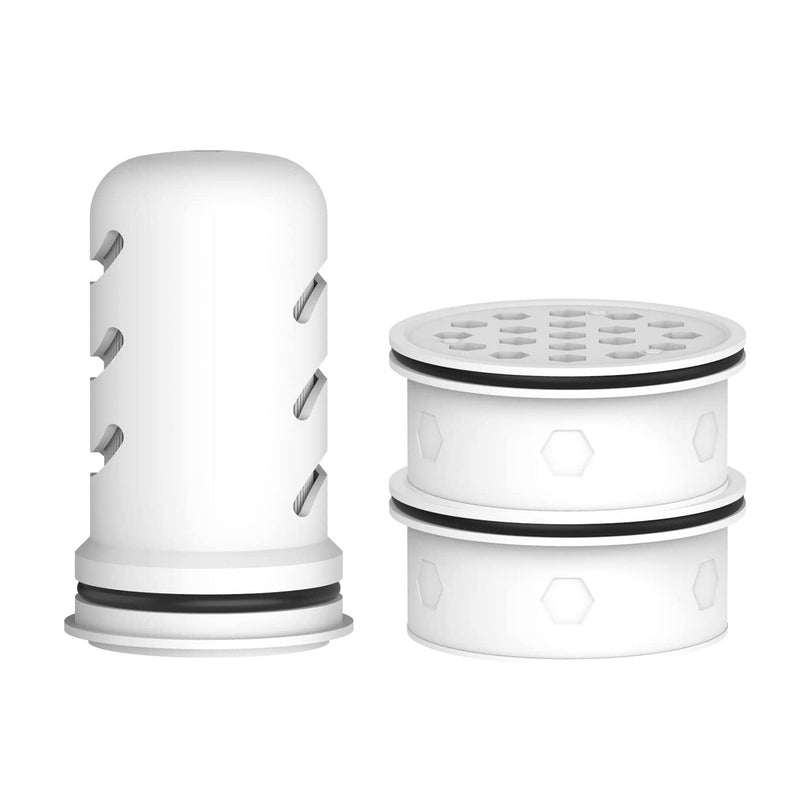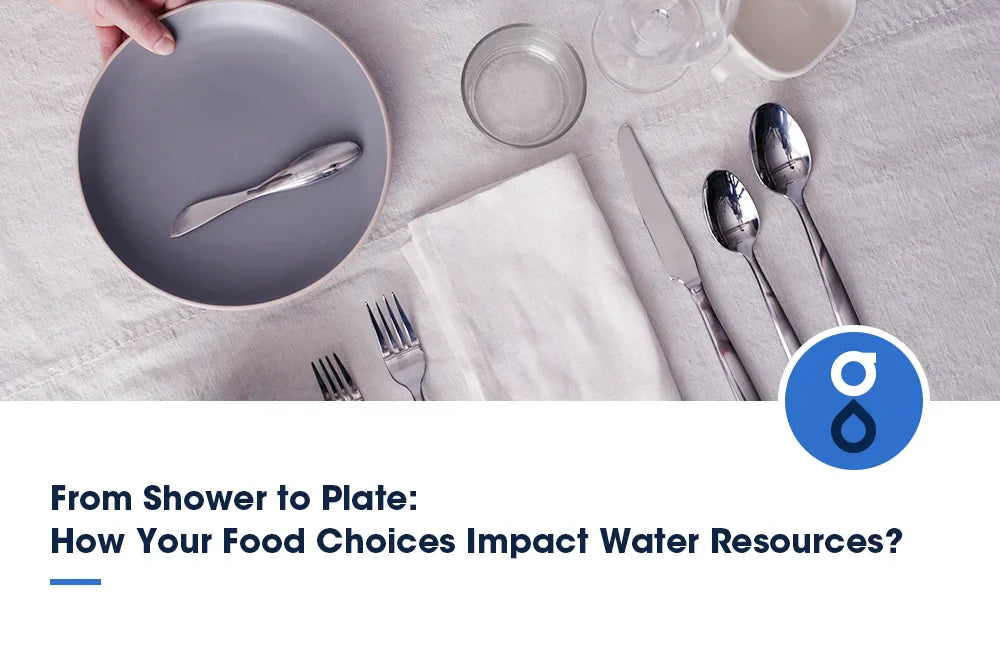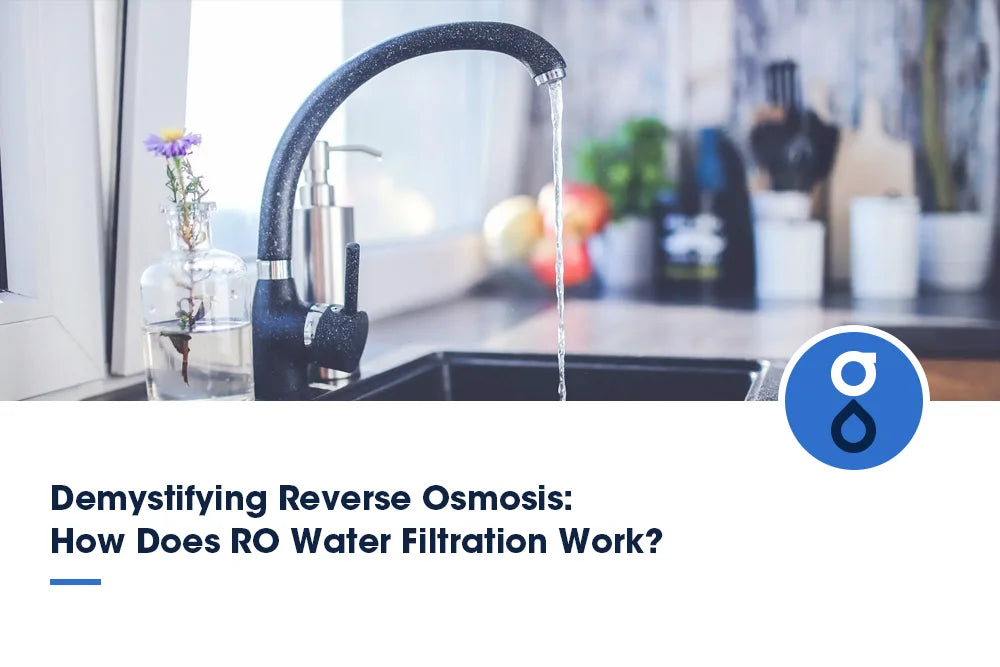Table of Contents:
Durch die Umkehrosmose wird zu viel Wasser verschwendet?
Entfernt RO wichtige Mineralien?
Schmeckt das RO-Wasser schal oder fade?
Die Wartung von RO-Systemen ist teuer?
RO-Filter entfernen keine Bakterien?
RO entzieht dem Wasser alle Nährstoffe?
Die Installation von RO-Systemen ist komplex?
Ist RO-Wasser zu sauer?
RO ist für den Heimgebrauch ineffizient?
RO-Systeme verlangsamen den Wasserfluss?
Abschluss
Wasserfiltration und Umkehrosmose werden oft missverstanden, wenn es um die Bereitstellung von sauberem und sicherem Trinkwasser geht. Viele Missverständnisse und Mythen ranken sich um diese Verfahren und verwirren Verbraucher. Um Fehlinformationen aufzuklären und die Wahrheit ans Licht zu bringen, räumt dieser Artikel mit zehn verbreiteten Missverständnissen über Wasserfiltration und Umkehrosmose auf. Indem wir jedes Missverständnis aufklären und genaue Informationen liefern, möchten wir ein klareres Verständnis dieser Methoden und ihrer Rolle für einen gesünderen Wasserkonsum vermitteln. Lassen Sie uns also in die Materie eintauchen und Fakten von Fiktion in Bezug auf Wasserfiltration und Umkehrosmose trennen.
Durch die Umkehrosmose wird zu viel Wasser verschwendet?
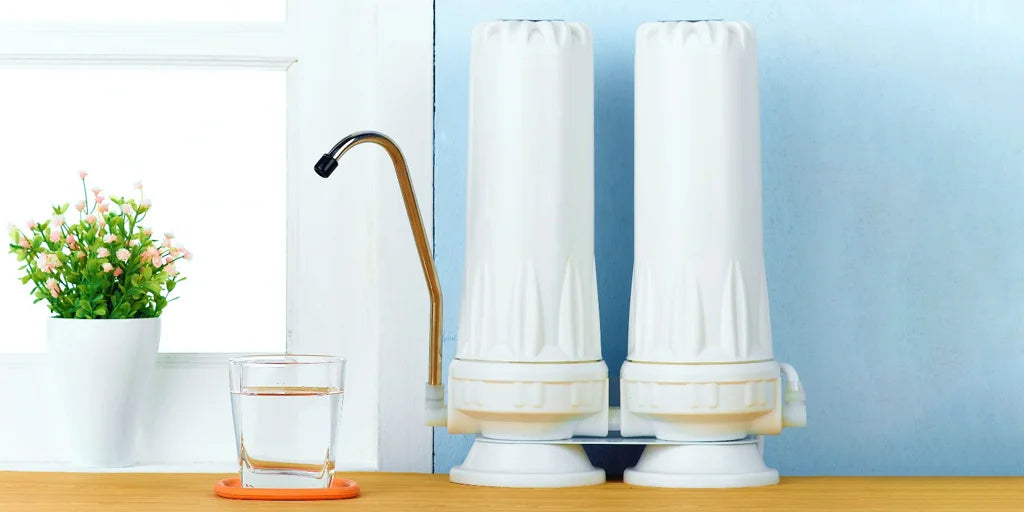
Wenn Sie sich Sorgen um Wasserverschwendung machen, haben Sie vielleicht schon gehört, dass Umkehrosmoseanlagen zu viel Wasser verbrauchen. Zwar können Umkehrosmoseanlagen während des Filterprozesses etwas Abwasser produzieren, die Menge wird jedoch oft übertrieben. Moderne Umkehrosmosesysteme wie das Untertisch-RO-Wasserfiltersystem sind effizienter geworden. Einige Modelle verschwenden nur 7,5 bis 11,5 Liter Wasser pro produziertem Liter gereinigtem Wasser. Darüber hinaus können Sie dieses Abwasser für andere Zwecke im Haushalt verwenden, z. B. zum Gießen von Pflanzen oder zum Reinigen.
Entfernt RO wichtige Mineralien?
Es mag Sie überraschen, dass ein weit verbreiteter Irrglaube über die Umkehrosmose-Wasserfiltration darin besteht, dass dabei wichtige Mineralien entfernt werden. Zwar können Umkehrosmoseanlagen Mineralien wie Kalzium, Magnesium und Kalium herausfiltern, man muss sich jedoch darüber im Klaren sein, dass diese Mineralien im Rahmen der Wasseraufbereitung als Verunreinigungen gelten.
RO-Wasser wird oft als sauber, klar und erfrischend beschrieben. Die Wahrnehmung von fadem oder fadem Geschmack kann auch von individuellen Vorlieben und Trinkgewohnheiten beeinflusst werden. Eine Zitronenscheibe oder eine Prise Salz können den Geschmack von RO-Wasser verbessern und es zu einer geschmackvollen und gesunden Wahl für die Flüssigkeitszufuhr machen.
Schmeckt das RO-Wasser schal oder fade?

Schmeckt Umkehrosmosewasser im Vergleich zu anderen Wasserfiltersystemen fad oder fade? Manche empfinden Umkehrosmosewasser als geschmacklos, da durch den Filterprozess Verunreinigungen wie Mineralien und Chemikalien entfernt werden, die den Geschmack beeinflussen können. Das Fehlen dieser Elemente bedeutet jedoch nicht zwangsläufig, dass das Wasser geschmacklos ist.
Tatsächlich wird RO-Wasser oft als sauber, klar und erfrischend beschrieben. Die Wahrnehmung von fadem oder fadem Geschmack kann auch von individuellen Vorlieben und Trinkgewohnheiten beeinflusst werden. Eine Zitronenscheibe oder eine Prise Salz können den Geschmack von RO-Wasser verbessern und es zu einer geschmackvollen und gesunden Wahl für die Flüssigkeitszufuhr machen.
Die Wartung von RO-Systemen ist teuer?
Die Wartung einer Umkehrosmoseanlage kann aufgrund der vermeintlich hohen Kosten für die Instandhaltung für manche problematisch sein. Die Vorstellung, dass die Wartung von RO-Systemen übermäßig teuer sei, ist jedoch oft übertrieben.
Zwar müssen bei Umkehrosmoseanlagen regelmäßig Filter und Membranen ausgetauscht werden, doch diese Wartungsarbeiten sind seltener, als manche vielleicht denken. Je nach Nutzung und Wasserqualität müssen die Filter in der Regel alle 6–12 Monate ausgetauscht werden. Angesichts der Vorteile sauberen Wassers ist dies ein überschaubarer Aufwand.
Darüber hinaus überwiegen die langfristigen Einsparungen bei Flaschenwasser und potenziellen Gesundheitskosten durch verunreinigtes Wasser die Wartungskosten bei weitem. Insgesamt sind die Wartungskosten eines RO-Systems unter Berücksichtigung der gesundheitlichen und finanziellen Vorteile eine lohnende Investition.
RO-Filter entfernen keine Bakterien?

Entgegen weit verbreiteter Missverständnisse entfernen Umkehrosmosefilter zwar effektiv Verunreinigungen, aber möglicherweise keine Bakterien. Während die Umkehrosmose größere Partikel wie Schwermetalle, Chlor und gelöste Feststoffe sehr effizient entfernt, können einige Bakterien aufgrund ihrer geringen Größe durch die Filterung schlüpfen.
Obwohl die meisten Bakterien deutlich größer als Wassermoleküle sind und theoretisch von der semipermeablen Membran eines RO-Systems abgefangen werden sollten, besteht die Möglichkeit, dass einige Bakterien durchdringen. Deshalb ist es wichtig, die Umkehrosmosefiltration mit zusätzlichen Methoden wie UV-Sterilisation oder einem Aktivkohlefilter zu kombinieren, um eine vollständige Entfernung von Bakterien aus Ihrem Trinkwasser zu gewährleisten.
RO entzieht dem Wasser alle Nährstoffe?
Oft wird fälschlicherweise angenommen, dass die Umkehrosmose dem Wasser alle Nährstoffe entzieht. Zwar entfernen RO-Systeme Mineralien wie Kalzium und Magnesium, wichtige Nährstoffe im Wasser, doch bedeutet dies nicht, dass das Wasser dadurch völlig nährstofffrei wird.
Die meisten wichtigen Nährstoffe stammen aus der Nahrung, nicht aus dem Wasser. Die geringe Menge an Mineralien, die durch die RO-Filtration entfernt wird, kann durch eine ausgewogene Ernährung leicht ausgeglichen werden. Darüber hinaus ist die Entfernung von Schadstoffen aus dem Wasser entscheidend für Ihre Gesundheit, da die Aufnahme schädlicher Substanzen schwerwiegende Folgen haben kann. Lassen Sie sich daher nicht von der falschen Annahme abhalten, dass RO dem Wasser alle Nährstoffe entzieht, sondern nutzen Sie dieses effektive Filtersystem, um sauberes, sicheres Trinkwasser für sich und Ihre Familie zu gewährleisten.
Die Installation von RO-Systemen ist komplex?
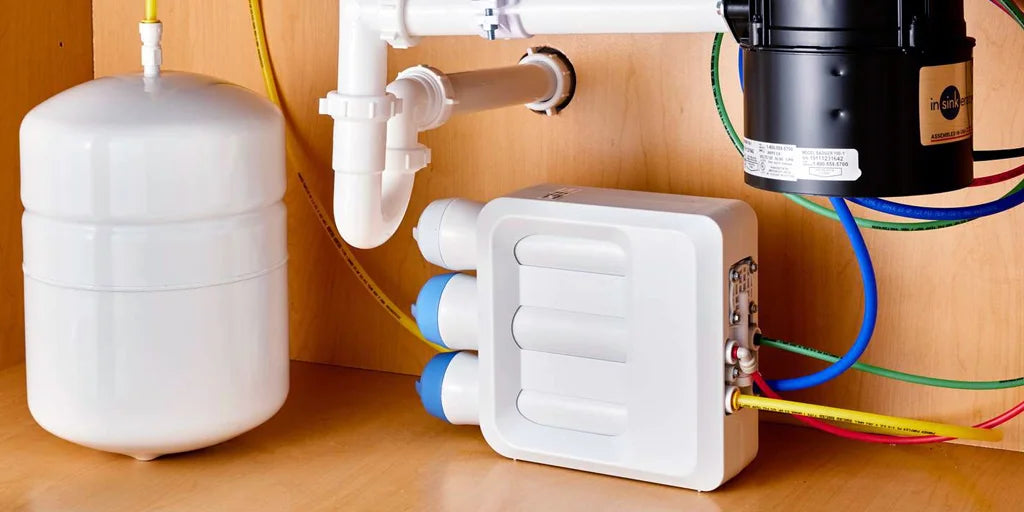
Die Installation von RO-Systemen mag zunächst entmutigend erscheinen, kann aber mit der richtigen Anleitung und den richtigen Werkzeugen ein unkomplizierter Prozess sein. Die meisten modernen RO-Systeme werden mit detaillierten, leicht verständlichen Anleitungen geliefert.
Für die Installation benötigen Sie in der Regel nur handelsübliche Werkzeuge wie einen Schraubenschlüssel und einen Schraubendreher. Der Vorgang umfasst in der Regel das Anschließen einiger Schläuche, die Befestigung des Systems und das anschließende Befüllen und Spülen für den ersten Gebrauch. Viele Hersteller bieten einen Kundendienst an, der Sie bei Problemen durch die Installation führt. Sobald das System eingerichtet ist, genießen Sie die Vorteile von sauberem, gereinigtem Wasser direkt zur Hand. Der Installationsaufwand lohnt sich also allemal.
Ist RO-Wasser zu sauer?
RO-Wasser wird oft als zu sauer angesehen, ist aber neutraler als allgemein angenommen. Umkehrosmoseanlagen können den pH-Wert des Wassers leicht senken, was es aber nicht unbedingt zu sauer macht. Der pH-Wert von RO-Wasser liegt typischerweise zwischen 6,5 und 7. Dieser Bereich liegt nahe dem Neutralwert, etwa sieben auf der pH-Skala.
Im Vergleich dazu können einige gängige Flaschenwässer und sogar Leitungswasser einen pH-Wert unter 7 aufweisen und sind damit saurer als RO-Wasser. Daher sind Bedenken hinsichtlich des Säuregehalts von RO-Wasser oft übertrieben. Wenn Sie sich Sorgen um den pH-Wert Ihres RO-Wassers machen, können Sie ihn mit einfachen Anpassungen in einen angenehmeren Bereich bringen.
RO ist für den Heimgebrauch ineffizient?
Angesichts ihrer hohen Effizienz und Kosteneffizienz können Umkehrosmoseanlagen für den Heimgebrauch überraschend effizient sein. RO-Systeme können eine Vielzahl von Verunreinigungen, darunter Schwermetalle, Chemikalien und Mikroorganismen, entfernen und so sauberes und sicheres Trinkwasser liefern.
Die Effizienz von Umkehrosmosesystemen liegt in ihrer Fähigkeit, Verunreinigungen auf molekularer Ebene herauszufiltern und so die hohe Qualität Ihres Trinkwassers sicherzustellen. Manche argumentieren zwar, dass RO-Systeme bei der Filterung Wasser verschwenden, doch der technologische Fortschritt hat zur Entwicklung effizienterer Systeme geführt, die die Wasserverschwendung minimieren. Daher können Umkehrosmosesysteme bei richtiger Wartung und Nutzung hocheffizient und vorteilhaft für die Reinheit der Wasserversorgung Ihres Hauses sein.
RO-Systeme verlangsamen den Wasserfluss?
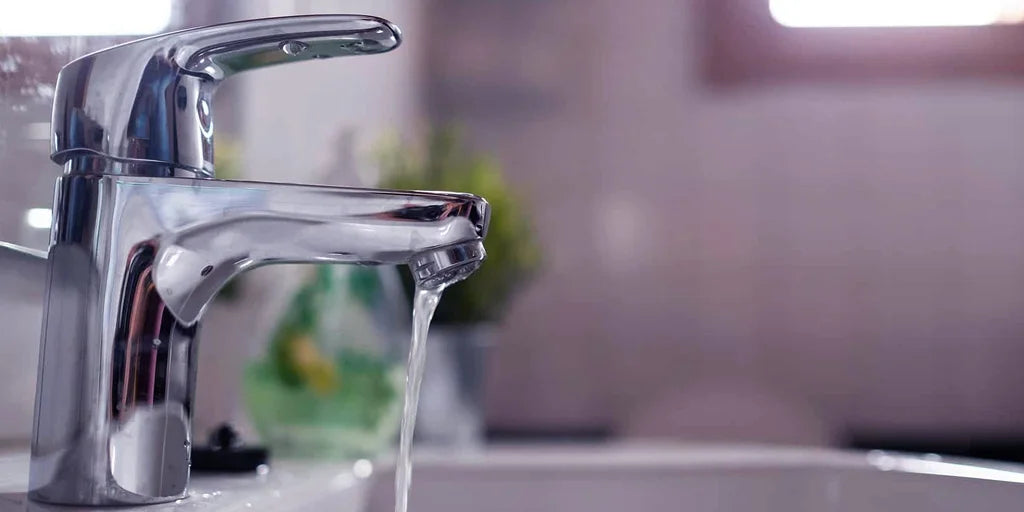
Möglicherweise ist Ihnen aufgefallen, dass Umkehrosmoseanlagen häufig die Verlangsamung des Wasserflusses während der Filtration bemängeln. Zwar können RO-Systeme die Durchflussrate im Vergleich zu herkömmlichen Wasserhähnen reduzieren, doch ist diese Verlangsamung für eine effektive Filtration notwendig.
Um Wasser durch eine semipermeable Membran zu drücken und Verunreinigungen zu entfernen, ist ein gewisser Druck erforderlich, der den Durchfluss natürlich verlangsamt. Moderne Umkehrosmosesysteme sind jedoch so konzipiert, dass sie die Filtrationseffizienz mit dem Wasserdurchfluss in Einklang bringen und so den Zugang zu sauberem und gereinigtem Wasser ohne nennenswerte Verzögerungen gewährleisten.
Abschluss
Nachdem Sie nun die Wahrheit über die Umkehrosmose-Wasserfiltration erfahren haben, können Sie die Vorteile von sauberem, wohlschmeckendem Wasser in Ihrem Zuhause genießen. Lassen Sie sich nicht von gängigen Missverständnissen von der Installation einer Umkehrosmose-Anlage abhalten – sie ist effizient, kostengünstig und wartungsfreundlich. Verabschieden Sie sich von Verunreinigungen und freuen Sie sich auf erfrischendes, reines Wasser mit Umkehrosmose-Filtration. Folgen Sie Glacier Fresh und entdecken Sie weitere Wasserfiltrationslösungen.

